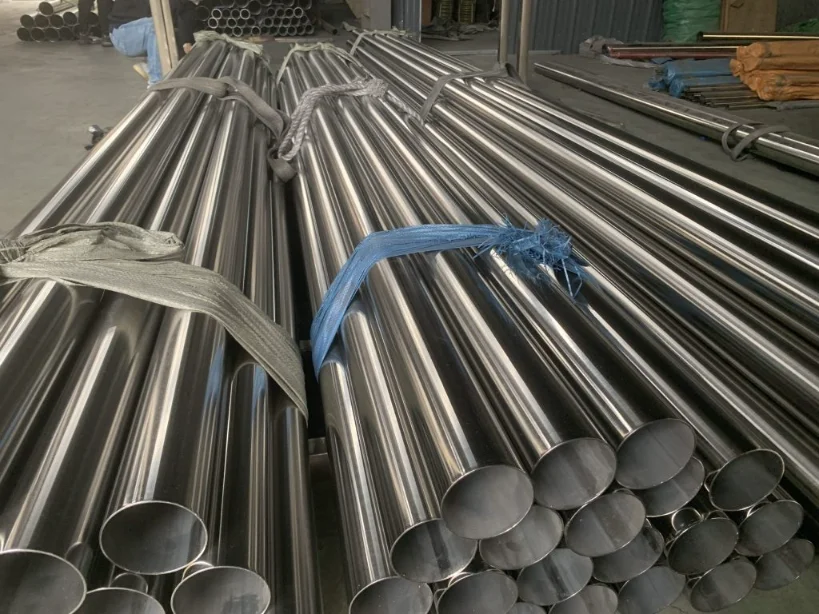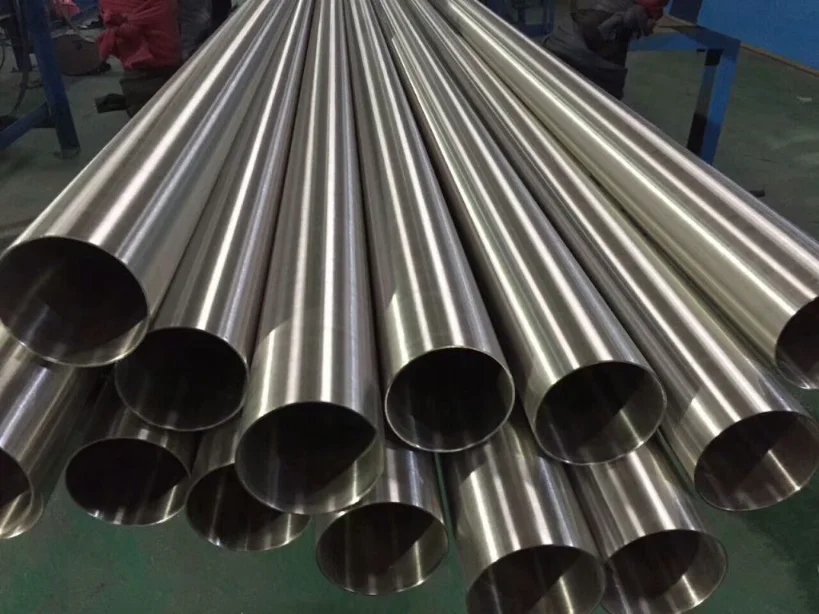
Heat, chlorides, pressure, and time keep score. Choose the wrong stainless pipe grade and you pay twice: once on purchase, again in downtime. Choose well and you get fewer interventions, longer runs, and quieter maintenance meetings. This guide walks through 2507, 2205, and 316L with clear trade-offs so you can pick a grade that fits both your budget and the environment it will face.
If you want a supplier that speaks specs without fluff, take a look at Qingdao Sunrise New Material Co., Ltd.. The site lays out grade coverage, mill cert practices, and export packing in plain language. It feels like working with an engineering team instead of a call center, which saves time when projects move fast.
Why Does the Right Stainless Steel Pipe Grade Matter?
Different media punish steel in different ways. Chlorides attack from the inside out, hot oxidizing gas chews at the surface, and pressure cycles tug at welds until something gives. A material that looks fine on a datasheet can struggle in brackish water, or in a condenser that sees a little sulfur. You need a short list that maps grade to service with enough headroom to absorb a few surprises.
Choosing among 2507, 2205, and 316L usually starts with three levers: corrosion resistance against chlorides, mechanical strength for required pressure at a given wall, and the cost profile over several years. Once you frame it that way, the path gets clearer.
What Do These Grades Look Like on Paper?
A simple chemistry check sets the stage. 316L sits around 17% Cr, ~10% Ni, ~2% Mo. 2205 moves to ~22% Cr, ~5% Ni, ~3% Mo with nitrogen for strength and pitting resistance. 2507 steps up to ~25% Cr, ~7% Ni, ~4% Mo with nitrogen tuned for phase balance. Those moves drive the Pitting Resistance Equivalent Number. Typical PREN markers land near 24 for 316L, about 35 for 2205, and 42 or higher for 2507. That PREN jump is why seawater systems look beyond austenitic grades once temperatures rise or chloride load climbs.
How Does PREN Translate to Field Results?
PREN isn’t just math. Higher values track with lower risk of pitting and crevice corrosion in chloride service. When the number crosses the low 40s, long-term performance in natural seawater becomes plausible with sane maintenance. Below that, the margin shrinks fast when flow stagnates, when deposits form, or when temperature heads north of 50–60 °C. You see it in test loops and you see it in the field.
How Do the Grades Compare in Corrosion Resistance?
You rarely get to change the medium. That puts the burden on your grade choice. Chloride stress corrosion cracking, pitting, and crevice corrosion write most of the repair tickets in coastal and process water systems. Here is how the trio stacks up when chlorides move from trace to heavy.
In mild chloride content and cool service, 316L performs well and stays friendly to fabricate. Push concentration or temperature and it starts to lose ground, especially in crevices and at welds that see residual stress. 2205 raises the bar. Duplex microstructure and higher Cr-Mo content resist pitting, and SCC resistance improves in many conditions that give 316L trouble. 2507 lives at the top of the list for chloride environments. With PREN beyond 42 and high strength, it holds up in seawater, desalination, and coastal cooling loops where downtime hurts.
What About Pitting, Crevice, and Stress Cracking Specifically?
Pitting and crevice corrosion form faster when chlorides concentrate under deposits or gaskets. 316L can pit in warm marine service even with good housekeeping. 2205 usually resists those starts at moderate temperature and salinity. 2507 extends that comfort zone into higher temperature seawater or high-salinity scenarios. For stress corrosion cracking, duplex grades resist crack initiation better than common austenitics in many chloride conditions, which is why offshore and desalination engineers keep 2205 and 2507 at the top of RFQs.
How Much Strength Do You Get and What Does That Mean for Wall Thickness?
Strength is the quiet budget lever. At room temperature, 316L yield strength often shows up near 200–220 MPa, 2205 around 450 MPa, and 2507 about 550 MPa. Even after temperature derating, duplex grades keep a meaningful advantage. With the same pressure target, that can translate to thinner wall selection, lower weight, fewer welding passes, and easier handling on site.
You see it in transport costs and hanger design. Knock a few kilograms per meter off a long run and the savings ripple through installation. When the spec allows it, a thinner duplex wall can keep total project cost steady even when the per-kilo price is higher than 316L.
How Does Strength Affect Fabrication and Fit-Up?
Higher strength means the pipe fights back a bit during forming. Plan bends with sensible radii. For welding, higher strength isn’t the main story; phase balance is. Duplex grades need heat input control so the ferrite-austenite split stays in the sweet spot. That is routine work for qualified crews but still worth stating in the WPS.
What Is the Cost Picture Over a Full Lifecycle?
Unit price tells only part of the story. 316L usually carries the lowest per-kilo cost. 2205 sits mid-range. 2507 costs more per unit weight. The ledger flips when you track life in seawater or brackish service. Duplex grades last longer in chloride service and resist many failure modes that force unplanned work on 316L systems. With 2507, those extra years stack up, especially for heat exchangers, seawater intake lines, or offshore risers where a shutdown costs more than the material ever did.
A simple table helps frame a first pass:
| Grade | Relative Cost | Typical Service Window in Chloride-Rich Duty | Where It Makes Sense Most |
|---|---|---|---|
| 316L | Low | Short to medium in warm chlorides | Fresh water, mild chemical duty |
| 2205 | Medium | Medium to long in brackish or moderate chlorides | Paper mills, mid-salinity loops, many plant utilities |
| 2507 | High | Long in high salinity or warm seawater | Offshore, desalination, coastal cooling, harsh chemical loops |
That “service window” isn’t a promise; it assumes decent flow, reasonable cleaning, and no odd contaminants. Real systems vary. The point is trend, not a guarantee.
How Do Maintenance Cycles Shift With Each Grade?
Fewer interventions drive the economics. When pitting slows, when crevice attack under gaskets becomes rare, you buy time. In practice that means fewer gasket swaps, fewer spool replacements, and fewer emergency welds. Duplex grades usually win here. 2507 tends to win by more.

How Tough Are These Grades to Weld and Fabricate?
Every installer has a favorite. 316L stays popular partly because it welds like a dream with a wide process window. Duplex grades ask for a little more care. Heat input needs control, interpass temperature should stay modest, and shielding practice should keep nitrogen where it belongs.
Field crews handle duplex daily when given the right procedure. Filler metals for duplex grades are well documented. With 2507, many procedures call out ER2594 or equivalents to keep corrosion resistance and phase balance aligned with the parent metal. Shops that weld duplex every week treat these steps as normal craft, not exotic practice.
What Tips Reduce Risk During Welding?
Keep heat input on the conservative side, avoid prolonged dwell at high temperature, and watch interpass temperature near 150 °C or lower per your procedure. Back purge when required, and inspect for phase balance if the service is critical. Simple, not glamorous, and very effective.
Where Does Each Grade Fit Best in Real Projects?
Matching grade to environment beats brand loyalty every time. 316L fits fresh water, mild chemical storage, HVAC, architectural tubing, and many food applications. It’s the go-to when chloride risk is low and fabrication speed matters most. 2205 shines in paper mills, pressure vessels, and brackish water service. It handles mid-salinity loops without constant babysitting. 2507 is the pick for high-salinity or warm seawater, offshore lines, desalination plants, and corrosive chemical loops that would chew through austenitic grades too fast.
For teams planning a long seawater run, it helps to review a super duplex option early. If you’re comparing choices and want a single product page as a benchmark for duplex stainless steel pipe sizing and service notes, that link is a good starting point.
Can a Decision Tree Speed Up Shortlisting?
You can narrow the field with four questions. What is the chloride content? What is the steady operating temperature? How long do you need the line to last before major work? How painful is a shutdown? If chlorides are low and shutdowns are cheap, 316L often wins. If the water is brackish or salinity sits mid-range, 2205 usually lands in the sweet spot. If this is a true marine or desalination duty, 2507 earns its keep.
What Should Appear in a Clean RFQ?
Clear specs save a week. List outside diameter and wall thickness with tolerances. State delivery condition and surface finish. Add the test document you need, such as EN 10204 3.1. Tell vendors the medium, temperature, and any odd contaminants, including sulfur content. If there is a field weld plan, say so. These details let vendors quote the right heat, the right batch tests, and the right packing without guesswork.
If your team is still weighing options for stainless pipe grade selection, it helps to flag that in your note and ask for parallel quotes so you can stay on schedule while the decision lands.
Who Is a Good Fit When You Need a Supplier?
Look for a site that shows scope of supply, not just a single SKU. Pipe, tube, bar, and plate in related grades means the lab and paperwork are dialed in. Response time matters too. A vendor with a live contact channel and product pages that list common diameters and wall ranges cuts two emails out of the chain. If you can reach a sales engineer who can talk phase balance, even better.
For seawater projects, ask early about spares and repair pieces. That small cushion smooths commissioning when a measurement changes onsite.
If you’re building a coastal or offshore system and want to sanity-check the best stainless for seawater system against your media and temperature, a brief note with those two numbers usually gets you a straight answer.
FAQ
Q1: What Drives the Price Gap Between 2507, 2205, and 316L?
A: Alloy content and demand patterns. Higher chromium, molybdenum, and nitrogen push costs up. Duplex grades also carry higher value in harsh service, which supports their market price.
Q2: Can 2205 Replace 316L in Most Plant Utilities?
A: Often yes in brackish or moderate-chloride systems. It brings higher strength and better pitting resistance. Check temperature and chloride load; in very clean water, 316L can still be the simpler choice.
Q3: Is 2507 Overkill for Coastal Cooling Water?
A: Not when temperature rises or downtime is expensive. Super duplex reduces pitting risk and stress corrosion issues in warm seawater where austenitics struggle.
Q4: How Much Wall Reduction Is Realistic With Duplex Grades?
A: Project dependent, but 20–30% wall reduction against austenitic selections at the same pressure rating is common. Use code rules and temperature derating to set final numbers.
Q5: What Welding Pitfalls Cause the Most Trouble With Duplex Pipes?
A: Excess heat input, poor shielding that strips nitrogen, and high interpass temperatures. Follow the WPS, use matching fillers, and monitor parameters so phase balance stays in range.






